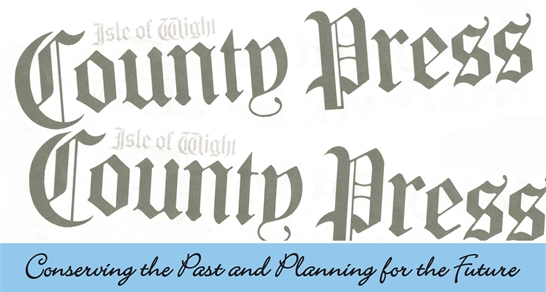March 2018
Island Landmarks
Natural Island landmarks, such as the Needles or Culver Down have helped the seafarer navigate our waters. In the last two thousand years, the variety of Island coastal land marks has increased and changed in style.
The agricultural Roman Villa at Brading would have been a land mark. It gave clear indication of where boats were to find a haven, which has now silted up. Later, church towers and spires were good markers for both landsmen and seafarers. Quarr Abbey was a fortified monastery. With its sweeping cultivated land it was a clear indicator to corn merchants or invaders of landing space close by. By 1800 any large house or farm with a view of the sea, such as Osborne or Norris Castle, could become a useful location point.
There are only a few installations whose primary construction was to help navigation. The Pepper Pot with its companion Oratory at Blackgang, the Sea Marks at Ashey Down and at the Duver and the lighthouses at The Needles and at St. Catherine’s Point all fall into this category.

The Pepper Pot at Blackgang.
The Tudor period saw land marks take on the additional role of “look out”. Yarmouth, West and East Cowes all had castles. Defence, at that time against the French of Spanish, was concentrated on the northern shore.
There were numerous Victorian military installations on the Island. Fort Victoria, Golden Hill Fort, Fort Albert, Fort Warden and the Brambles were at the western end. The Solent had the eastern markers of the Palmerston Forts and smaller fortifications at Yaverland, Seaview and St Helens’s. In the 20th century war time establishments at Bouldnor, St. Boniface Down and Puckpool could also be seen from the sea.
Along the south coast, while smuggling was an adjunct to fishing, land marks were more in the nature of aids to keeping clear of the excise men, such as those at Atherfield. Land marks were not always put to charitable use. In the days of wrecking boats for their cargo the land marks were non-existent, but lights indicating land were used to draw the ships onto the rocks, especially along the south coast. Compassion eventually prevailed and light houses were created. The first one at The Needles, built in 1786, was so high it was in cloud or fog in bad weather, and the present one had to be constructed in 1858.
Despite the use and value of telecommunications it is still necessary to have look outs. The National Coast Watch Institution ensure seafarers are safe and their passage monitored. The Coast Guard Stations are distinctive structures with big windows and aerial masts.
The East Cowes power station chimney and Cowes Plessey tower show industrial landmarks. Another unusual land mark is the Union Flag at East Cowes, largest in the world.
There are two more land marks that are important for safety and navigation and these are the Rowridge and Chillerton Radio Masts. Their height means they have to be lit at night, great landmarks from all around the Island.
[Go Back]

